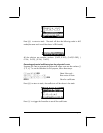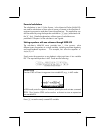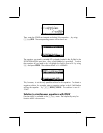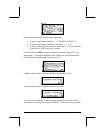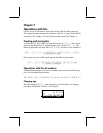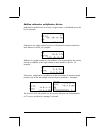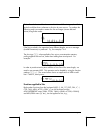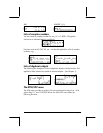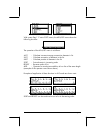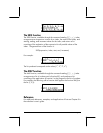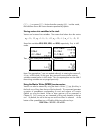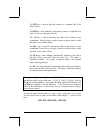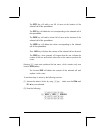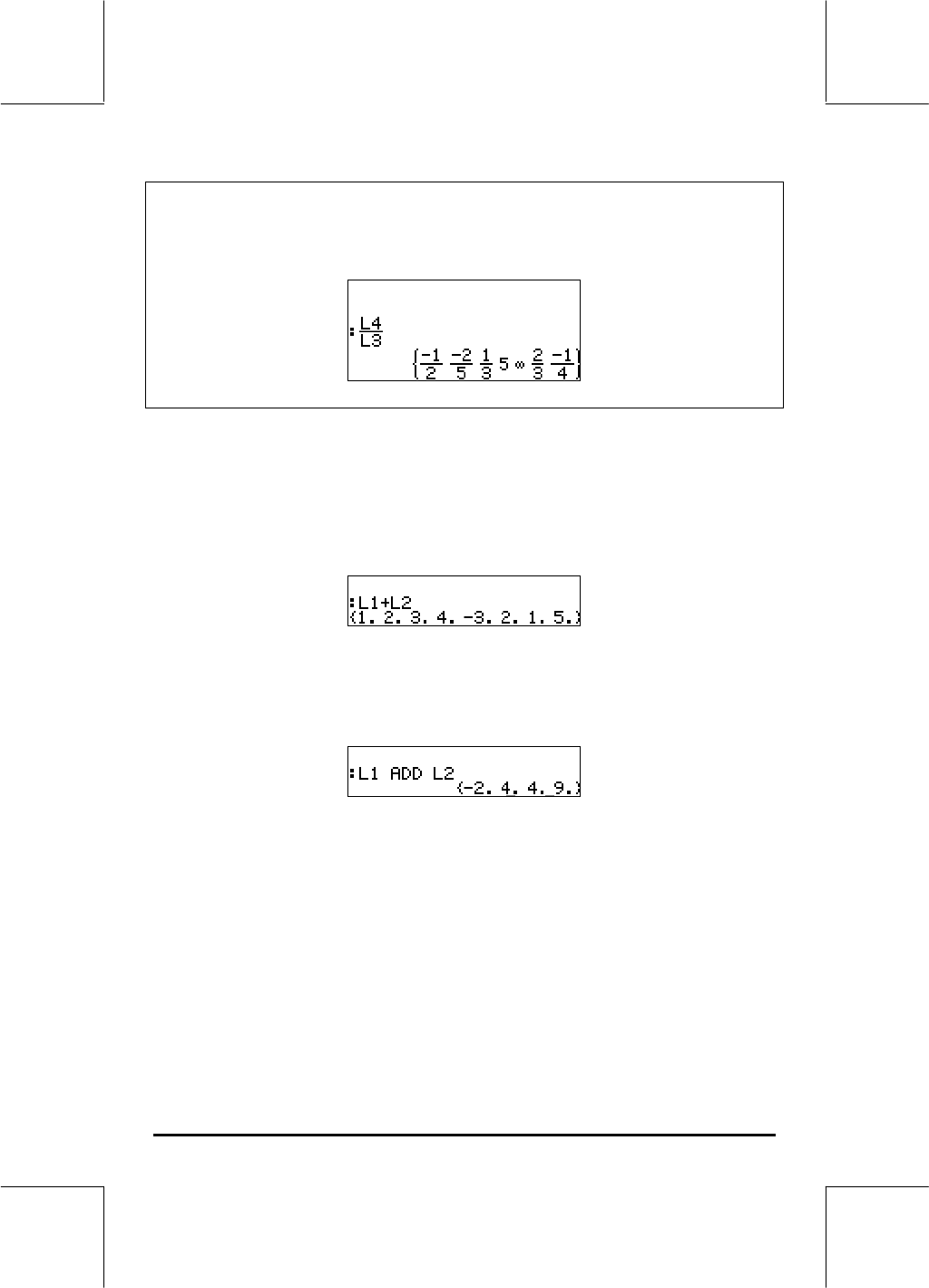
Page 7-3
Note: If we had entered the elements in lists L4 and L3 as integers, the infinite
symbol would be shown whenever a division by zero occurs. To produce the
following result you need to re-enter the lists as integer (remove decimal
points) using Exact mode:
If the lists involved in the operation have different lengths, an error message
(Invalid Dimensions) is produced. Try, for example, L1-L4.
The plus sign (+), when applied to lists, acts a concatenation operator,
putting together the two lists, rather than adding them term-by-term. For
example:
In order to produce term-by-term addition of two lists of the same length, we
need to use operator ADD. This operator can be loaded by using the function
catalog (‚N). The screen below shows an application of ADD to add
lists L1 and L2, term-by-term:
Functions applied to lists
Real number functions from the keyboard (ABS, e
x
, LN, 10
x
, LOG, SIN, x
2
, √,
COS, TAN, ASIN, ACOS, ATAN, y
x
) as well as those from the
MTH/HYPERBOLIC menu (SINH, COSH, TANH, ASINH, ACOSH, ATANH),
and MTH/REAL menu (%, etc.), can be applied to lists, e.g.,



